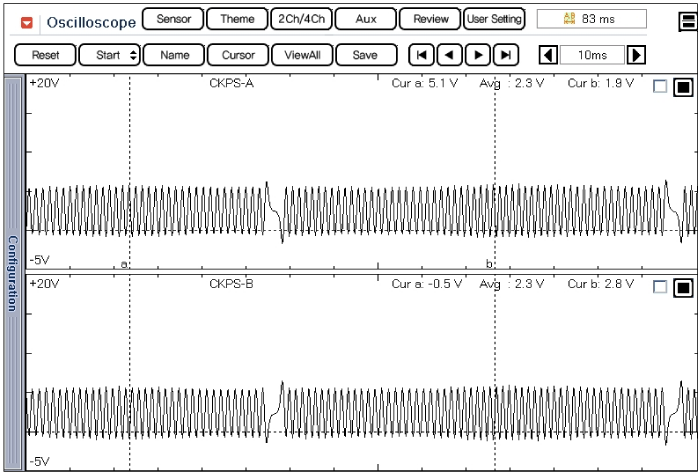

A Crankshaft Position Sensor (CKPS) is a magnetic type sensor that generates voltage using a sensor and a target wheel mounted on the crankshaft; there are 58 slots in the target wheel where one is longer than the others. When the slot in the wheel aligns with the sensor, the sensor voltage outputs low. When the metal (tooth) in the wheel aligns with the sensor, the sensor voltage outputs high. During one crankshaft rotation there are 58 rectangular signals and one longer signal. The ECM calculates engine RPM by using the sensor’ s signal and controls the injection duration and the ignition timing. Using the signal differences caused by the longer slot, the ECM identifies which cylinder is at top dead center.
If CKPS cannot find reference mark 2 or more times during starting, P0335 is set.
Item | Detecting Condition | Possible Cause | |
DTC Strategy |
•
Reference mark check (During cranking) | 1. Poor connection 2. Open or short in signal circuit 3. CKPS | |
Enable Conditions |
•
- | ||
Threshold Value | Case1 |
•
No signal input detected | |
Case2 |
•
Gap position missed | ||
Case3 |
•
Gap position not found | ||
Case4 |
•
Teeth no. between consecutive gaps is not correct | ||
Diagnostic Time |
•
Continuous | ||
MIL ON Condition |
•
3 driving cycle | ||

This example shows a typical Crankshaft Position Sensor(CkPS) waveform at idle. The ECM controls the injection and ignition timing by using these signals.